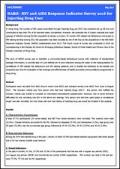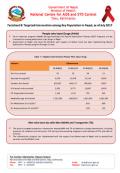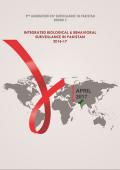Publications on People Who Inject Drugs (PWID)

Resource | Publications,
This year marks the 25th anniversary of the Mainline Foundation, and this provides an opportunity to reflect on twenty-five years of harm reduction. Our mission to reduce the number of HIV infections among drug users through education – the purpose of Mainline’s establishment in 1991 – has been achieved. Or at least the number of HIV infections is no longer on the rise, and most users have a roof over their head.

Resource | Fact Sheets,
In Hong Kong, the number of HIV cases transmitted through injecting drug use (IDU) has remained low up till now and contributed to less than 5% of all reported cases cumulatively. However, the potential risk of cluster outbreak and rapid upsurge of infection among the IDU population is always a concern. To monitor HIV-related risk behaviours and access to HIV testing services among IDU, this population has been included as one of the four at-risk populations in the HIV/AIDS Response Indicator Survey (HARiS) implemented since 2013.

Resource | Tools,
The Programmatic Mapping Readiness Assessment Tool provides an adaptable step-by-step guide for conducting an mapping readiness assessment (MRA). The MRA focuses on the safety and well-being of KPs as a group and individuals within the group; helps identify the potential risks and benefits of conducting PM before initiating the mapping process; and guides discussions among program staff, steering committee members, and community leaders in creating an action plan to address risk.

Resource | Guidelines,
These are the first WHO guidelines on testing for chronic HBV and HCV infection and complement published guidance by WHO on the prevention, care and treatment of chronic HCV and HBV infection. The primary audience for these guidelines are national programme managers in ministries of health and health-care providers in low- and middle-income countries (LMICs) responsible for planning and implementing hepatitis testing, prevention, care and treatment services.

Resource | Presentations,
The objectives are to estimate the prevalence of HIV and syphilis among PWID and PWUD and HCV among PWID, to examine HIV risk behaviors among PWID and PWUD: illicit drug use behaviors, substance abuse, and other health issues including healthcare seeking behaviors and exposure to HIV programs and to estimate the national population size of PWID and PWUD by types of drug used.

Resource | Publications,
This policy briefing was drafted by a group of local and international organisations with in depth
knowledge and extensive experience of drug-related issues in Myanmar. It is structured around a set of five strategic interventions, each of which comes with concrete recommendations that are adapted to the Myanmar context.









